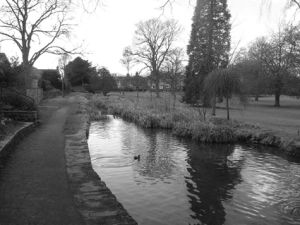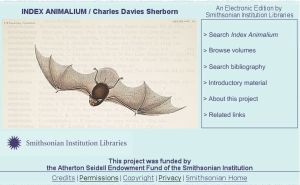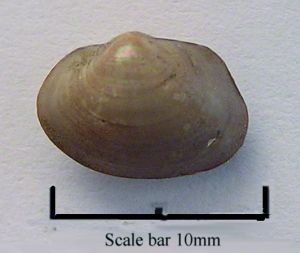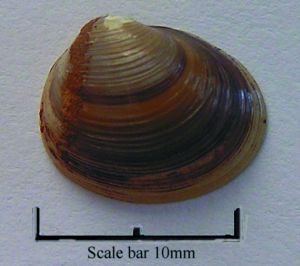|
I count myself lucky that I live close to another conchologist; in my case it is Adrian Norris.This means that any discussion regarding the identity of a specimen or a particularly interesting site need not take place over the telephone or via the internet. More importantly it means that there is more scope for ad-hoc field trips and as I work shifts there are often times when these can be arranged. A telephone call on 10th June 2005 established that Adrian was free the following day and I arranged to collect him. As far as the venue was concerned Adrian is currently working towards a 1km coverage of Yorkshire and a quick look at the current coverage map was needed. I noticed that 10km square SD 59 had quite a few gaps on its Western edge.This square covers Skipton and has within it both the River Aire and the Leeds and Liverpool canal. So the venue was to be Gargrave to the West of Skipton. Gargrave straddles the A65, which is the main road at the southern edge of the Yorkshire Dales. Both the aforementioned water courses meander through the village, and in fact the canal crosses the river on an aqueduct on its western edge just prior to bending south and heading for the red rose county (or conversely did it bend North and head for Gods country). During the construction of the canal, work came to a halt on the Yorkshire stretch at Gargrave for 13 years due to lack of funding.When it was finally completed in 1816 it connected Hull to Liverpool utilising the Humber and the Aire and Calder navigation. It is also worth mentioning that the boundary between VC’s 63 and 64 follows the canal in this area.The Aire at Gargrave is in transition between mountain stream and floodplain river as east of Skipton it starts to enter the industrial heartland of West Yorkshire.The bed is extremely rocky in many parts yet there are also some small stretches of slow water. Our first stop was the village itself.The old walls around produced, among other species, numbers of Vallonia costata and Clausilia bidentata, Cornu aspersum was also present which confirmed an old 10km record. The river within Gargrave was extremely poor and very rocky with only Lymnaea peregra being found.A small stream that entered the river gave us our first surprise in that it not only contained Valvata cristata and Gyraulus albus but Bythinia leachii. I will speak of this species later. Following the stream a short distance we discovered that it was the release point from an old goit which is a left over from one of the two cotton mills, which closed in the 1930’s.This goit was rich in mollusca with huge numbers of Spharium corneum being found. Travelling to the west out of the village we looked at several stations along the canal and recorded several species of interest such as Theodoxus fluviatilis, Limax flavus, Ashfordia granulata and Spharium rivicola. Following lunch which was taken ‘al fresco’ on the canal side at Bank Newton (SD 34/9152) we investigated this site. An old wall added Balea perversa agg. to the list, and the banking added 2 new 10km records for L. flavus and Deroceras panormitanum.The canal itself provided a decent list, the most important of which was Musculium transverum.This was found only in one small area near and under the bridge and was in thick mud.This was only the second time I have encountered this species in Yorkshire, the first being the classic site at Blue Bridge in York over 20 years ago. I only found 3 adult dead shells but Adrian quickly found a number of distinctive juveniles. Surely this must be the find of the day? We decided to head for home but with the intention of some stops on the way. Upon examining the area of Thoralby Swing Bridge (SD 34/9652) between Gargrave and Skipton we again found an interesting site.There were large numbers of very fresh dead shells left by a recent flood actually under the swing bridge and a search of these added several species to the site. Among these S. rivicola was found in numbers together with a few specimens of M. transversum.A search of the canal did not reveal any other specimens of the latter.Another 10km record was added that being Acroloxus lacustris, found as usual on marginal plants. I feel it is worth mentioning that here, as at other points visited during the day, Pisidium amnicum was found and that many were of large size bordering on the maximum dimensions given by Kileen et al.This 1km square had the highest total of the day. For those interested in statistics, I will mention that during the day we had recorded a total of 60 species, 30 terrestrial and 30 freshwater, which had been obtained from 8 one-kilometre squares.The numbers varied from 14 in the lowest which was a road margin to 34 in the highest. On checking the day’s records against the atlas I discovered that there were 6 new 10km records and 7 confirmed pre 1950 records. It was at this point that I realised the importance of the record for B. leachii. A glance at the atlas will show any observer that the majority of Yorkshire records for this species are in the east of the county and that this old record was stuck out on its own. If I had noticed the record before I would have assumed that it was from the canal but this was not the case. It was whilst compiling this note that I made the research to try and identify the reason for the goit from which the specimens came and found the references to the old cotton mills.There are, I note, some records from around the Liverpool area and this is the area from which raw cotton would have been forwarded to the mills. It would seem that a possible explanation for its presence in Gargrave is that it arrived with these bails from the Liverpool area; after all it would not be the first species to be transported in this manner. I would appreciate any other suggestions from members. The record for M. transversum is equally as important.This is a species rarely encountered and it was interesting to see it at 2 points on the canal, which were some 6km apart as the canal flows.The NBN gateway shows the atlas record to have been made in 1966. On speaking to Barry Colville a few weeks after our visit I told him of the site which he then visited and found good numbers of adults. I have noticed that some of the specimens pictured in the AIDGAP key to bivalves were from Clayton- Le-Moors a village through which the canal runs, which is over 30km away on the Lancashire side of the Pennines. I think it worthy of mention that about 4 years ago I investigated a short stretch of the canal that had been drained for maintenance.This was between the two localities visited and although I found a long list of species, M. transversum was not seen either live or dead. I hope this short article helps to remind members of how useful and interesting ‘ad-hoc’ recording days can be.When time permits this year I shall be checking other stations along the canal in order to try and locate further sites for this interesting yet very local species. ReferencesKerney M P 1999 Atlas of the Land and Freshwater Molusca of Britain and Ireland. Harley Books, Colchester Killen et al 2004 Freshwater Bivalves of Britain and Ireland. Field Studies Council, Preston Montford |
Fig 1 Photo David Lindley
Fig 2 Index animalium
Fig 3 A specimen of Musculium transversum from the canal at Thoralby (Photo David Lindley)
Fig 4 Some large size Pisidium amnicum were found in the canal. (Photo David Lindley) |
Yorkshire Notes
Issue
10
Page
16




